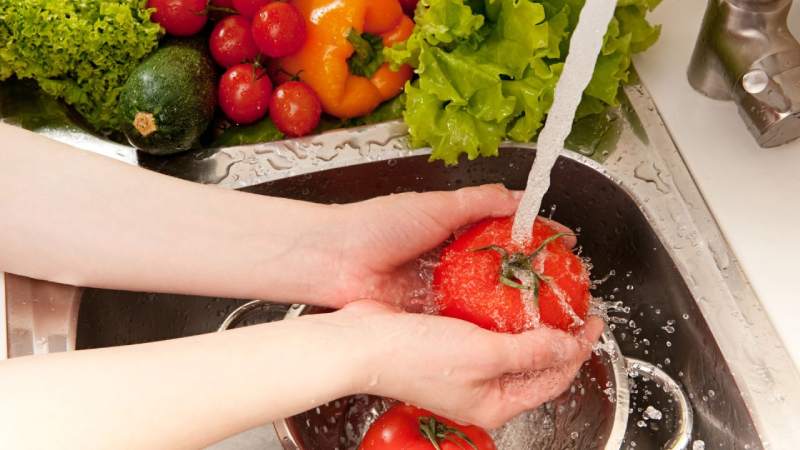Vegetables and other plant-based foods are a rapidly expanding trend in the United States. More than 73% of respondents sought plant-based substitutes to enhance their health and contribute to the environment. With recent research demonstrating that pesticide-free produce includes more antioxidants and a significantly lower percentage of heavy metals like cadmium, the trend is mirrored by a desire for sustainably cultivated, organic fruits and vegetables. Preparing your food in advance can save you time and help prevent waste, whether you enjoy making vegetable-rich stews, fresh, crisp spring salads, or fiber-rich crudités with herbs served with your favorite homemade dip.
When you next visit your neighborhood fruit and vegetable market, remember the following advice to make sure you use all the stuff you purchase.
Making A List of Vegetables To Prepare In Advance
When visiting a market or supermarket, planning your list helps determine which vegetables you plan to use immediately and which you wish to prep for later use throughout the week. Try to create a basic meal plan to determine how much product you need to buy to lower the likelihood that extra food will be wasted. Because not all veggies keep well in the fridge, choose them carefully while preparing them. Kale, celery, cauliflower, broccoli, carrots, beets, sweet potatoes, and yams are just a few foods that can be refrigerated for several days.
Assembling Equipment
You should set up your work area before starting because you’ll be handling a variety of vegetables at once. A sizable cutting board, razor-sharp blades, graters, and various sealable bags or airtight containers are just a few essentials you could require. Not all people require expensive slicers, dicers, and spiralizers. You only need one sharp knife when slicing carrots, shredding cabbage, or separating cauliflower from its stalk. Use a giant chopping board, a grip pad, or a moist cloth to keep the vegetable in place when using your knife for chores like shredding. Have additional tools, such as a colander, numerous dishes to hold various vegetables, and any other means to gather and discard leftovers.
Free To Freeze
On Monday, you may make a substantial minestrone. On Tuesday, you might have snacks and a salad. And on Wednesday, you might make sautéed mixed vegetables. Although most veggies have a respectable shelf life, freezing may be your best bet if you come across a massive head of cabbage or purchase wide varieties (such as green and red). Brussels sprouts, onions, garlic, cruciferous vegetables, asparagus, kale, spinach, and corn are just a few of the vegetables that freeze nicely. Although a vegetable’s texture may occasionally slightly change after freezing, the flavour won’t be compromised. Therefore freezing is frequently the best choice.
Blanching Before Freezing
Veggies before freezing them is a fantastic technique to guarantee they retain their satisfying crunch. Blanching kills the enzymes that generate and gradually alter nutrients’ colour, texture, and flavour. Blanching is a simple procedure. Just cut, slice, or shred the vegetables as usual, then add them to a pot of boiling water for a few minutes. It would help if you didn’t overcook them to the point of softness. They need to have a lovely crunch and be a little soft. Remove the vegetables from the water as soon as possible, then cool them in a big dish of ice and water. Place them on a clean towel and pat them dry once completely cold. Then, use a Ziploc vacuum sealer to seal them.
Put them in an airtight container or a sealable bag if you don’t have a sealer.
Cutting Vegetables in Uniform Slices
Ideally, when chopping and slicing veggies, you should do so mindfully and without rushing. When chopping your vegetables into uniform pieces on a lazy Sunday, put your favorite calming music on the player, and take your time. This is especially crucial if you plan to cook with your vegetables. Vegetables will cook at different rates if chopped haphazardly and in pieces of varying sizes and shapes. Even if you use your vegetables in raw dishes, consistency will give your meal the balance and elegance it needs to entice even picky diners.
Do Prepped Vegetables Retain Their Nutritional Value?
Preparation-ahead vegetables do lose some nutritional content due to oxidation, but doing so is slowed down by refrigeration. According to research from the University of California at Davis, wrapping sliced veggies in plastic. Before storing them can reduce nutrient loss to just 10% for vitamin C, 3% for beta carotene, and 7% for folate. Vegetables at a salad bar. Lose more nutrients since they are exposed to air and oxidize more quickly. Pre-cut greens (such as lettuce, kale, and spinach) are kept in plastic containers. So that the most nutrients possible make it to the customer’s table.
When vegetables are fresh, they taste fantastic and have a delightfully crisp texture. But, after being prepare and kept in the refrigerator or freezer, many veggies still taste great in various meals. Furthermore, they maintain a significant portion of their nutrients, making them nutritious for the remaining days of the week. Organize your plan to use the freshest vegetables first and save the ones. That will last the longest for later in the week. To get the most antioxidant boost from your weekly diet, include a decent mix of fresh and frozen foods.
Also read: Wheatgrass Juice
Also read: Women’s Hormones
